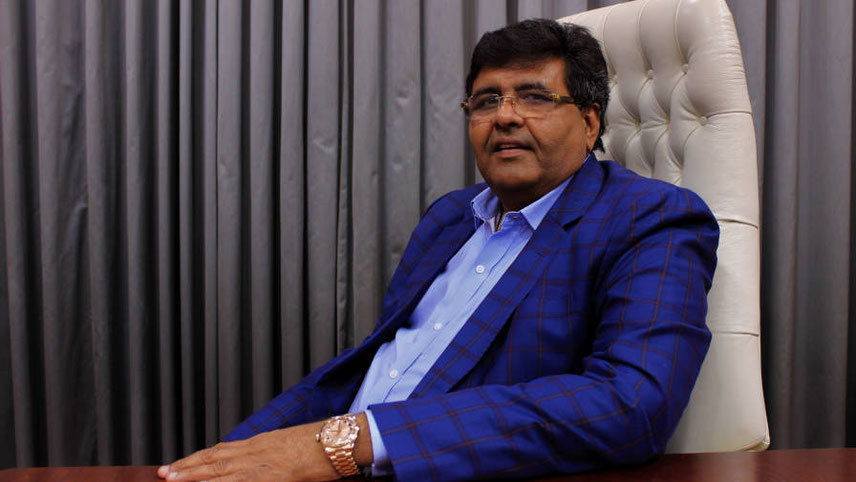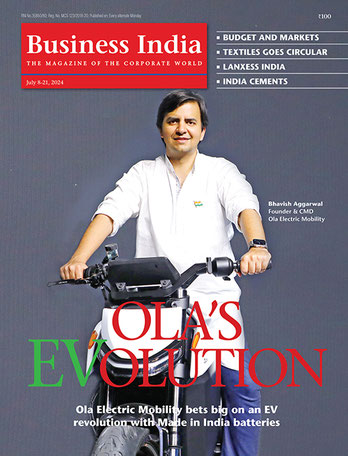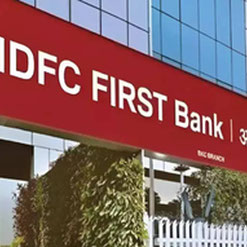-

In the next 2-3 years, prices are expected to trade above $3,000 factoring in the current and future monetary policy and economic situation
Prithviraj Kothari, MD, RiddiSiddhi Bullions Ltd
As the Fed cuts rates, US bond yields are expected to decline and gold prices should increase. Finally, gold prices will get support from continued central bank buying as they want to diversify forex reserves away from the dollar. Therefore, in all likelihood, gold prices are expected to stay strong and closer to $3,000 per troy ounce by 2030,” observes V P Nandakumar, MD & CEO, Manappuram Finance.
Geopolitical conflicts
“The value of gold will continue to rise in the same exponential way in the next 5 to 6 years also. It is most likely to reach historic highs. Geopolitical conflicts internationally are not likely to subside anytime soon and will be the major trigger for high gold prices. Inflation is also another reason that will contribute to an increase in gold prices. Dollar’s strength against the Indian rupee will also contribute to the increase in gold prices. Yet another factor influencing the price of gold is ruling interest rates,” says Kiran Kumar, CMD, Chennai-based Lalithaa Jewellery.
Gold is an international commodity and its price trajectory depends on a lot of factors. “Since gold is traded in USD, the dollar index and USD price impact it primarily; a lower interest rate scenario increases the appeal for gold, and lastly it is considered a safe haven, attracting funds during times of uncertainty. While we cannot forecast gold prices, factors point towards a rising trend in the medium to long term. In the short term, the demand for gold may be muted due to the elevated prices,” says Sachin Jain, Regional CEO, India, World Gold Council.
Importantly, the rise in the prices coincided with dollar strength and falling inflation expectations. The latest phase of rise has also coincided with stronger and more resilient data from the US, that has enabled the markets to start pushing out the start date of the Fed rate cuts. “The ECB has signalled for a rate cut sooner rather than later, given the lower inflation trajectory in the region,” says YS Chakravarti, MD & CEO, Shriram Finance.
US bond yields and DXY Index
"Gold prices have challenged their historical negative relationship with US bond yields and the DXY Index," says Indranil Pan, Chief Economist at Yes Bank, pondering what is driving gold. He adds: "Strong demand – the latest driver for gold prices has been the demand-side story – is mainly driven by central bank buying for their reserve assets. This also signifies waning confidence in holding USD as reserve assets. Secondly, the rising demand for gold and silver for industrial use – specifically for circuitry manufacturing in the electronics sector. Thirdly, rising retail demand from China. This has helped neutralise money flowing out of gold ETFs (exchange-traded funds). China's retail demand is strong due to the uncertain economic environment – leading residents to hedge risks and park funds in safe-haven gold."
The overarching reason why gold demand has been high is the fear of uncertainty globally. The uncertainty relates to both macroeconomic factors and geopolitical tensions, such as the Russia-Ukraine crisis, Red Sea crisis, etc. “Global relationships have seen greater degrees of confrontation, polarisation and a move away from global cooperation. The macro-outlook remains uncertain even as the world has shown significant growth resilience. Risks to election outcomes (64 counties representing a combined population of 49 per cent go to elections in 2024) coupled with macro uncertainties, can shape policy making,” adds Pan.
-

Dollar’s strength against the Indian rupee will contribute to the increase in gold prices. Yet another factor influencing the price of gold is ruling interest rates
Kiran Kumar, CMD, Lalithaa Jewellery
Amit Goel, Co-Founder & Chief Global Strategist, Pace 360, a SEBI registered multi-asset PMS & Cat III AIF says: “Gold has moved up by about 30 per cent from its low of $1,811 in early October 2023. Gold was, until last year, one of the most despised asset classes in the world because of the rising dollar index and US bond yields. With bond yields softening since then and the Fed becoming more dovish, the macroeconomic backdrop was much better for gold to move up. Now at levels close to $2,320 per troy ounce, gold may be a little overextended for now, but the evolving global macroeconomic backdrop is very positive for gold.” Goel expects gold to be sideways in a range for some more time before it starts moving up again.
"Continued buying by central banks will also be a tailwind for gold. We anticipate the dollar to lose its appeal in a multi-polar world over the next 5-7 years, which will further bolster the gold narrative. We project that gold will reach Rs1,50,000 by 2027, and it may rally up to Rs2,00,000 by 2028-2029. Gold’s upward movement will be propelled by a US-led global recession, a deflationary downturn in the US economy, and the risk-off environment in financial markets. While all risky assets may enter a bear market, gold will establish itself as the most attractive haven asset,” adds Goel.
According to the World Gold Council, 24 per cent of central banks intend to increase their holding reserves in the next 12 months. Central bank net demand totalled 290 tonnes in the first quarter of FY25 – the strongest start to any year on record and RBI grew its gold reserves by 19 tonnes during the first quarter, exceeding last year’s annual net purchases (16 tonnes). Thus, continuous central bank purchase will support gold price reaching higher prices in the coming years.
“We have data indicating that not just the central banks of China and India; many others like Singapore, Qatar, Kazakhstan, Turkey have been increasing their gold reserves. This indicates a noticeable policy shift by many banks to increase their reserve allocation to gold gradually and hence their demand is likely to continue in the coming months,” says Ravi Gehani, Fund Manager, DSP Mutual Fund.
Investment option
When choosing a gold investment option, factors such as liquidity, storage costs, taxation, safety and investment horizon are typical considerations. Inflow into Gold ETF recorded significant increase during and post the pandemic. Preference for gold during times of adversity is also notable from the investment inflow into Gold ETFs during 2020 when the world was engulfed by the Covid pandemic.
From an analysis for the period between 2019 and 2023, yearly growth in assets under management of Gold ETFs has been on the rise. Gold ETF AUM increased by around 150 per cent from Rs5,527.76 crore in December 2019 to Rs13,819.39 crore in December 2020 during the pandemic period. The AUM in Gold ETFs has been on a growth trajectory since then. As of December 2023, the AUM in Gold ETFs is valued at Rs25,959.02 crore, which is a substantial growth of 27.29 per cent from December 2022 and 87.84 per cent from December 2020, states an ICRA Analytics report.
-

The ECB has signalled for a rate cut sooner rather than later, given the lower inflation trajectory in the region
YS Chakravarti, MD & CEO, Shriram Finance
According to Vishal Jain, CEO, Zerodha Fund House, “investing in gold ETFs offers unparalleled advantages including liquidity, cost-effectiveness, and security. By investing in gold ETFs like Zerodha Fund House’s Gold ETF (NSE, BSE symbol - GOLDCASE), investors can eliminate the hassle of storage, purity concerns and insurance associated with physical gold, while enjoying the flexibility of investing on the stock exchange.”
So, it is always good to have gold in one’s portfolio. “Whether physical gold or Sovereign Gold Bonds or ETF, that will be a personal choice based on one’s socio-economic background and evolution as an investor. In India, people prefer physical gold because they look at the asset as a ‘storage of wealth’, ‘passing on to the next generation’ or ‘emergency recourse’ rather than an investment. Only in the last 10-15 years has the mindset changed in the semi-urban and urban population,” says Shashank Pal - Chief Business Officer, PL Wealth Management, at Prabhudas Lilladher Pvt Ltd on the gold prices.
Big trigger
“The next big trigger for gold, taking prices to $3,000 in the next 2-3 years would be the US debt crisis. One should pay close attention to the most important factor of alarmingly high US debt levels, which is above $34.5 trillion in April 2024 and rising $1 trillion every 100 days. Concern about the rapidly rising US government debt is also one of the main reasons for elevated gold prices in 2024,” avers Kothari, pointing out that US debt crossed the $34 trillion mark in 2024, with interest payments projected to reach $870 billion in 2024, underscoring the urgency of fiscal management.
In the US, debt is growing faster than the economy and the debt-to-GDP ratio is above 125. “The US will be unable to pay its debts if it defaults, disrupting the world's financial markets, and leading to catastrophe. Investors will probably keep turning to gold in the case of a debt crisis in order to protect their capital from the consequences,” suggest Kothari.
Real Money
What is the trend for gold telling us? It is quite obvious when you do the math that there is a massive devaluation of currencies happening all around the world. One by one, every single currency has broken down and is losing value relative to ‘Real Money’. Look at the trend for gold priced in various currencies and there is a pattern: as the lines ascend, there is an increasing worthlessness of the underlying currencies in the real world.
And now in 2024, the US dollar has also fallen victim to this same global phenomenon. The US dollar had managed to hold its ground better than all the other currencies. But this year the dollar has broken down as well.
This story is just beginning to unfold. Investors have barely even recognised that it’s happening. The recent gold rise is primarily on account of investors seeing gold as a hedge against inflation, rising geopolitical uncertainty in both Ukraine and the Middle East (Gaza). There is also an expectation that the dollar may not be the best bet for a country’s foreign exchange reserves on account of excess printing and the easing of US interest rates. The former would have long-term consequences for the value of the dollar, while the latter could cause the dollar to weaken in the short term. Many central banks are also purchasing gold, thereby impacting prices.
-

Gold gained traction due to its treatment as a hedging tool and also central banks of various countries adding more gold to their reserves. Considering these factors gold seems poised to be in an upward trend
Sanchay Sinha, CGM – Retail Banking Department, South Indian Bank
Where is the next stop for gold? We think there could be still some scope for gold to rise unless there is clarity on uncertainties – both geopolitics and macro. Given our belief that both central bank and retail buying can continue, there remains a scope for gold to move to the $2,450-2,500/oz.
“Indian gold demand seems robust given the stable macro economy, rising incomes (also rural) and a younger population resulting in a heightened demand for ‘wedding gold’. The advent of digital modes of investment in gold has also reignited investor interest, especially amongst the Gen Z and millennials,” adds Jain.
“We expect the dollar to lose its appeal in a multipolar world over the next 5-7 years, and that will also add to the gold story. We believe that gold will reach Rs1,50,000 by 2027, and it may rally up to Rs2,00,000 by 2028-2029. Gold’s up move will be driven by a US-led global recession, a deflationary bust in the US economy, and the risk-off environment in the financial markets. While all the risky assets may go into a bear market, gold will establish itself as the most attractive haven asset. Our prediction is gold will reach $5,000 on COMEX and Rs160,000 on MCX by 2027 and $6,500 and Rs200,000 on MCX by 2029,” hints Goel suggesting to the investors it will be well advised to buy gold on every downside over the next 3 months and then hold on for about 5 years. “We expect gold to outperform every other asset class on the planet by a mile,” sums up Goel.
-

Gold has been a cherished asset for Indian households
Alternative investment: Gold versus equity
Gold and equity are two very different types of investments, each with its own set of characteristics, advantages, and risks. Gold has been a cherished asset for Indian households, consistently delivering impressive returns compared to other investment options.
Gold has played an important role in the history of mankind as it has been widely used as a store of value and medium of exchange. Currently, apart from its shine and usage for jewellery, the precious metal is widely seen as a safe-haven asset investment, meaning that it is considered a good investment at all times but more during turbulent times. Gold is also widely seen as a hedge against inflation and depreciating currencies as it doesn’t depend on any specific issuer or government. Indian households and temples have the maximum gold reserves.
“Over 20 years, gold has surged by 1,150 per cent, while the Sensex has seen a 1,250 per cent increase – a neck-and-neck competition. Sensex's CAGR return is around 15 per cent, while gold's CAGR return is 12 per cent, so I think similar returns are expected in the future too,” adds Kothari of RSBL. Historically equity has outperformed gold in the long run. But equity indices like the Dow Jones have given 10 per cent annualised returns in the last decade whereas gold has just given 5 per cent annualised returns in the past 10 years.
But rising geopolitical tensions make gold an ideal investment option for better risk adjusted return in the medium-term perspective. It will also be good over the years for the gold loan market. Says Jain of the World Gold Council: “Historically, gold and equity have had an inverse relation. A fall in equities attracts investment in gold. But currently, we are witnessing a broad rally across asset classes in India. A rally in equities depends on corporate earnings, fund flows, etc.”
Chakravarti of Shriram Finance says: "Based on a 10-year chart, gold has consistently shown a lag effect compared to other investment asset classes, especially the equity segment.” In the last 10 years, gold has provided a 5 per cent annualised return compared to the Dow Jones' return of 12 per cent per annum.
“This decade, which commenced with a six-sigma event like Covid-19, followed by geopolitical tensions such as the Russia-Ukraine war, and Middle East issues like the Israel-Iran crisis/China-Taiwan tensions, has propelled gold to break the consolidation of the last decade and move higher to a current range of $2,200-plus. The relative underperformance of gold in the last decade will likely lead to a better allocation for gold as an asset for investment. Thus, the historical 8 per cent return in dollar terms can potentially be surpassed with a 10 per cent plus dollar return in this decade. We strongly believe gold as an investment is a good option in the current scenario.”
Sinha of South Indian Bank believes that while equities have the potential for strong returns, they also come with higher volatility and risk compared to gold, which is often considered a safer haven during times of uncertainty. “Diversification across asset classes, including both equities and gold, can help manage risk and optimise investment returns in different market conditions. Also, many people in rural and urban pockets in India believe purchase of gold is traditional, auspicious and for the future requirements of the family, rather than as an investment which brings returns. Also, there is a rise in the sections of society which is now looking at gold as an opportunity for returns due to the significant appreciation of its value during the last few years,” says Sinha.
-

Data indicates a noticeable policy shift by many banks to increase their reserve allocation to gold gradually and hence their demand is likely to continue in the coming months
Ravi Gehani, Fund Manager, DSP Mutual Fund
To be honest, as an asset class, equity has given better returns than gold over the medium to long term. However, we need to appreciate that equity is a highly volatile asset class and losses can be huge at times. Gold has lower volatility though it is also not entirely free from price fluctuations. “Due to the relative stability of gold as an asset class, several experts are in favour of increasing gold allocation in one's portfolio from 10 to 20 per cent. So, while equity indeed gives better returns than gold over the longer term, it is much more volatile than gold as an asset class,” observes Nandakumar of Manappuram Finance.
“Even during the Covid-19 crash, equities corrected by 20 per cent-plus whereas we saw gold appreciating during that period as well. Gold will continue to remain an important asset class for investors looking to diversify their portfolio. Sovereign Gold Bonds offering an annual interest rate of 2.5 per cent, and no capital gains tax if held till maturity, are an attractive option to participate in gold,” observes Vijay Kuppa - CEO, InCred Money.
“In a period where asset allocation would be key for generating alpha, we would advise allocation to gold in the overall portfolio which would fit the bill in terms of hedge against the rising uncertainty in the global marketplace. Based on a combination of factors discussed, we would not be surprised to see gold trading around $2,700/oz in the next one year, implying an upside of about 17 per cent from current levels. We feel that physical demand on any price dips would keep the shine of the yellow metal intact in the medium to long term,” concludes Manish Chowdhury, Head of Research at StoxBox.
Be as it may be, equity as an asset class may outshine gold over a period of time but that comes with a lot of volatility and drawdown which is not seen in gold. And equity and gold will continue to be key components of any healthy investment portfolio. While the adventurous fancy equity, the common and conservative investor will continue to depend on gold for stability and sustained returns.
-

Gold will continue to remain an important asset class for investors looking to diversify their portfolio
Vijay Kuppa, CEO, InCred Money
Chinese influence
China's gold acquisition leading the market rally
The World Gold Council describes two countries – China and India – as ‘super consumers’ of gold. Thirty years ago, China and India accounted for about 20 per cent of annual consumption of gold. Today, these two countries make up nearly 50 per cent of gold demand with the Chinese economy stabilising and India being the fastest growing economy. As a result, we believe their strong demand will continue in this decade, thus supporting the price of gold.
Chinese retail demand is strong due to its uncertain economic environment – leading to residents hedging risks and parking funds into safe-haven gold. China is one of the biggest players in the gold markets and holds considerable influence over market dynamics. This influence has only strengthened since gold prices increased by nearly 50 per cent since late 2022.
During the last month, gold prices surged, even though the Federal Reserve indicated a 'higher for longer' interest rate stance, sending yields surging and keeping the US dollar stronger compared to almost every other major currency. One of the key factors leading to this surge is high demand for the precious metal in China.
One of the major buyers of gold in China is the People’s Bank of China, the country’s central bank. Over the past 17 months, the bank has consistently increased its gold reserves. In the previous year, it acquired almost 225 tonnes of gold, surpassing the purchases of any other central bank in the world. By the end of 2023, China’s gold reserve had reached 2,235 tonnes, marking a 225-tonne increase from the previous year's level of 2,010 tonnes. This represents a significant boost of more than 11 per cent in a single year.
“China has been purchasing gold to diversify its reserves and decrease its reliance on the US dollar, which has traditionally been the most important currency in the country's forex reserves. China has been reducing its holdings of US Treasury for more than a decade. As of March, China had about $775 billion worth of US debt, down from about $1.1 trillion in 2021,” says Chintan Mehta, CEO, Abans Holdings
Central banks worldwide, including the Chinese Central bank, have begun acquiring gold after the US Treasury Department and other American allies froze Russia’s dollar holdings and imposed sanctions on Moscow following the Russia-Ukraine conflict. This has made countries cautious about the risks associated with dependence on the dollar.
Another significant source of demand for gold in China comes from investment demand. Gold investment has become more attractive as traditional investments have turned lacklustre. China's real estate sector, traditionally a destination for household savings, remains in crisis. Meanwhile, investor confidence in the country's stock markets continues to dwindle.
“China, along with India, has always been the biggest consumer of gold. The consumption demand for jewellery, bars, and coins in China jumped from 825 MT in 2022 to 959 MT in 2023, resulting in a 16 per cent increase in consumption demand. China’s demand for gold jewellery rose by 12 per cent, while the demand for Chinese bars and coins surged by 26 per cent,” adds Mehta.
Recent positive signs in the Chinese economy and improving consumer sentiment, along with a weak property market, will positively affect gold demand in China. Worsening geopolitical tensions, including the war in the Middle East and the Russia-Ukraine conflict, have significantly increased the demand for gold, as has the prospect of lower US interest rates, all supporting the rally in gold prices. The combination of these factors will keep the demand and prices of gold high in international markets.









































